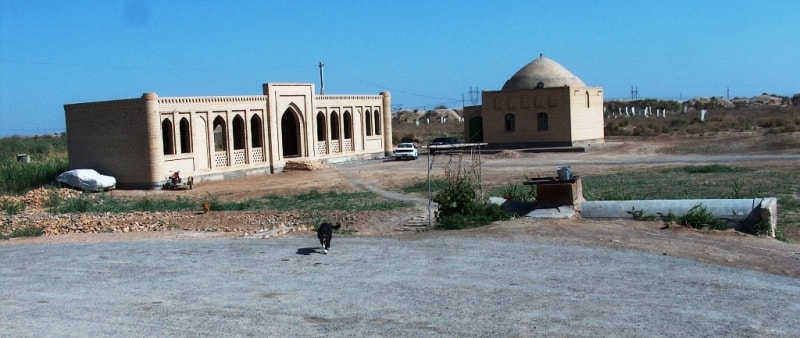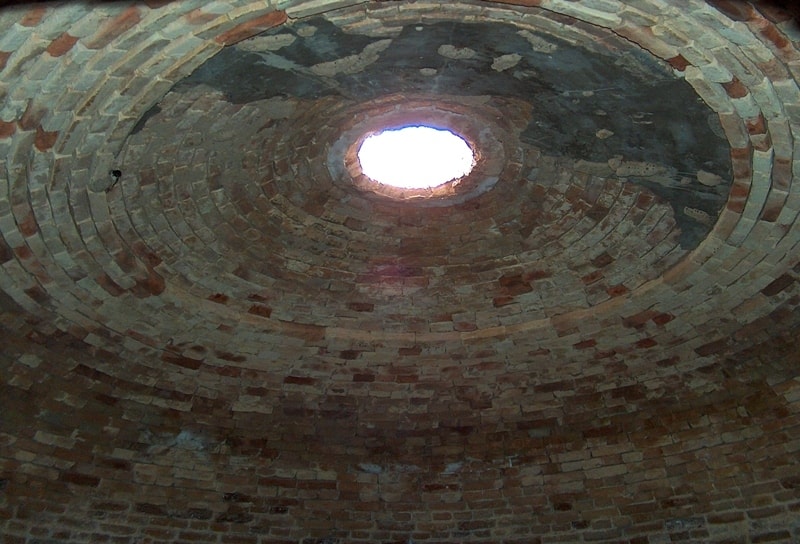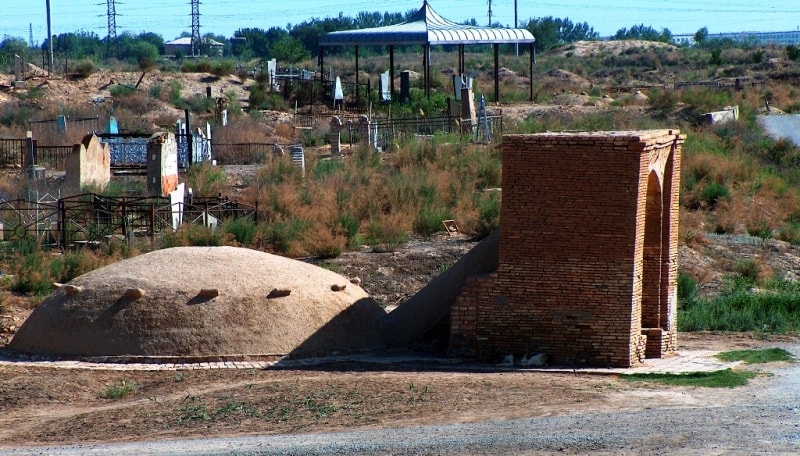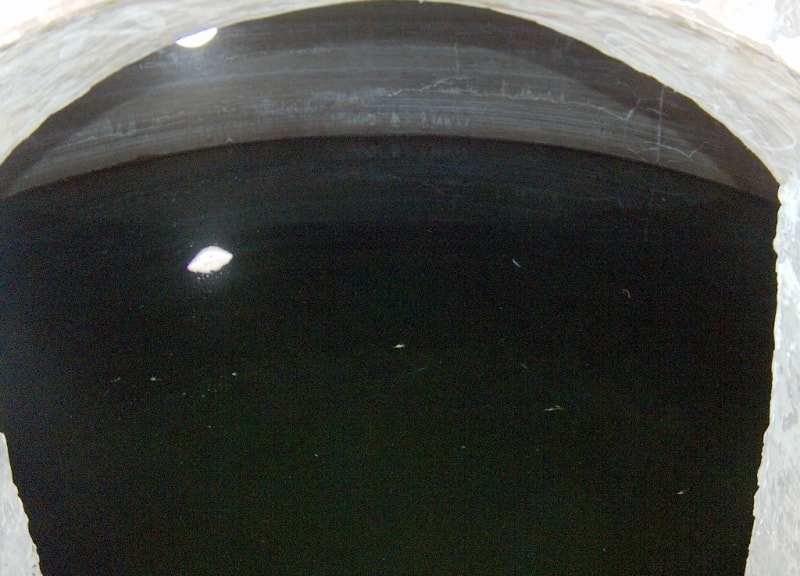Вы здесь
Sardoba in Merv.

Phototours over ancient Merv.
“Merv was never a mere staging post for caravans and nomads. It always belonged to settled empires and its most ancient ties are with Iran to the south-west rather than with Transoxiana or the Turkmen tribes. For five centuries, from the decline of the Seleucids in the II century B.C. until the rise of the Iranian Sassanids in the mid III century A.D., Merv was part of the Parthian empire”
Photos of Central Asia.
«Ancient Merv » is in the central part of historical and cultural reserve sardoba (underground pool intended for storage of water). The entrance arch from which is restored conduct a step to khauz which is in downturn.
The pool has a concrete protection. Water cold. sardoba it is completely restored. Gaunt and huge in the middle of Sultan Kala is the Sultan Sanjar mausoleum, completed in 1140 as Moscow was being born. Its other dome, 38 metres high and originally clad in blue tiles, was said to be visible a day’s march away.
A second inner dome appears to be supported by a lattice of brick ribs but these are probably only decorative. The squinches which make the transition from cubic base to dome are elegantly hidden on the inside by four corner galleries and on the outside by an arched arcade.
Muhammad Bini Atciz Az Seracksin, the architect of this and Sarakh’s Abul Fazl mausoleum, signed the base of the dome on its east side, modestly plastered over his signature. The building itself is earthquake-proof. With foundations m deep, it moves but doesn’t fall.
Architect Muhammad al-Bini Atsyz Sarahs. The classic type of centric tombs of monumental forms: cubi form volume crowned through a gallery above him - a cylindrical drum, carrying a double dome shell. The decor of the gallery sets used curly brick and carved pieces with stylized floral and epigraphic ornament.
The interior is painted geometric and epigraphic nature made the blue and red on a white background. On the dome construction system herds forming a spatial geometric weave with a figure of eight-pointed star at its zenith.
Excavations revealed traces adjacent to the mausoleum of ancient buildings - apparently referred to the East-sponsored mosque and the palace of the Seljuk. Sultan Sanjar himself lies 4 m below the cenotaph in the middle of the chamber, protected from rising saline groundwater by a deep seal of water-resistant reed ash mortar and elaborate ventilation system with one shaft which comes to the surface next to the cenotaph and was long thought to be a well and eight more round the outside of the mausoleum.
The mausoleum of Seljuk ruler Ahmad Sanjar (1118 - 1157) occupies the center of the ruined walled city of Sultan Kala, Merv. This mud brick mausoleum represents the architectural peak of the destroyed Seljuk capital in the Merv Oasis of the Karakum Desert, along the famed Silk Road.
Muhammad ibn Aziz from Sarakhs in Khorasan built the mausoleum soon after the Khwarazm Shahs deposed the Seljuk dynasty. Unlike many of Sultan Kala's solitary tombs, the mausoleum was part of a larger religious and palatial complex and connected by a grille window to a mosque on its west.
None of the ancillary buildings survive. The mausoleum is noted as a rare example of Seljuk commemorative architecture dedicated to a non-religious and political figure. It also marks a significant shift, from the typical vertically-accentuated Seljuk tomb tower towards squatter proportions with a new emphasis on interior space.
The mausoleum consists of an enormous brick cube, approximately 27 meters square crowned by a large dome nearly 18 meters in diameter. Arched corner galleries along the upper story maintain a stark rectangular profile while concealing the squinches that mark the cube's transition to the dome.
The gallery façade's alternate pointed-arch and triangular-arch bays create solid-void compositions that harmonize with two rows of blind arches along the dome's base. Miniature turrets along each corner above the gallery once facilitated the cube-to-dome transition, but were lost over time.
The mausoleum's square, brick mass is relieved by two gateways, expressed on the east and west elevations. Plaster carved to simulate brick bonds and inset with terracotta panels decorates some brick facades.
The elevations also exhibit traces of stucco treatment and holes left behind by scaffolding erected for repeated restoration efforts. The galleries are elaborately adorned with terracotta patterns in arch intrados and alternate panels of carved brickwork.
The outer dome was once embellished with turquoise tiles, but only its interior's exposed, interlaced structural ribs exist today. These trace a central eight-pointed star motif within the dome's eye, surrounded by a radial series of foiled arches and stalactite-topped pilasters.
The mausoleum is much revered and has been restored several times. The dome was restored in 1911, and the galleries were largely rebuilt in recent decades. Unfortunately, much of the twelfth-century terracotta ornament is feared to have been lost in insensitive reconstruction projects during the 1990s.
The monument and the cultural park of ancient Merv was declared a UNESCO World Heritage site in 1999. World attention and increased tourist inflow have guaranteed better upkeep of the structure.




Authority:
Bernshtam A.N. «History-archeologic sketches Central Tien-Shan and Pamir-Alay». «Religious and spiritual monuments of the Central Asia». The author of M. Khashimov. Publishing house " Saga ", 2001 Tolstov S.P. « Ancient Khoresm », 1848. Tolstov S.P. « On traces Ancient Khorezm civilizations », М.-L., 1948.
Photos
Alexander Petrov.







